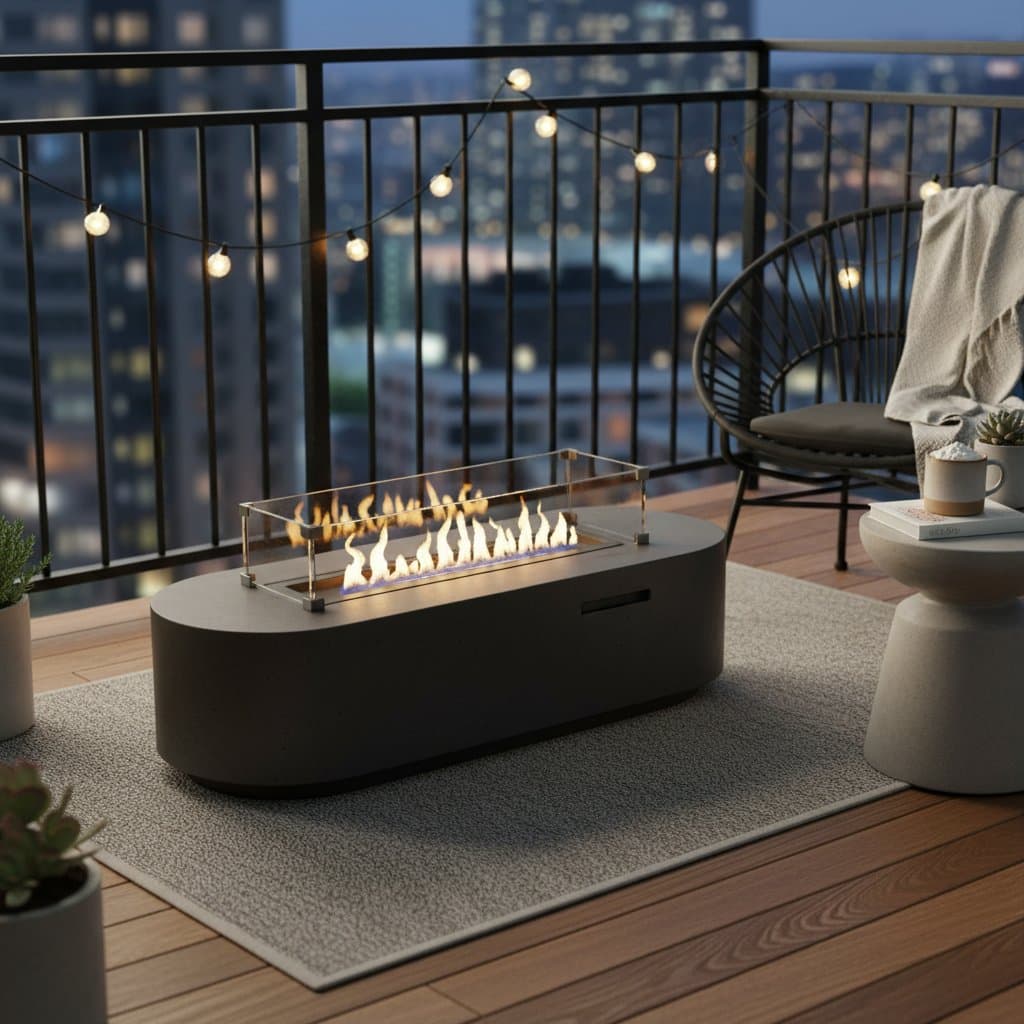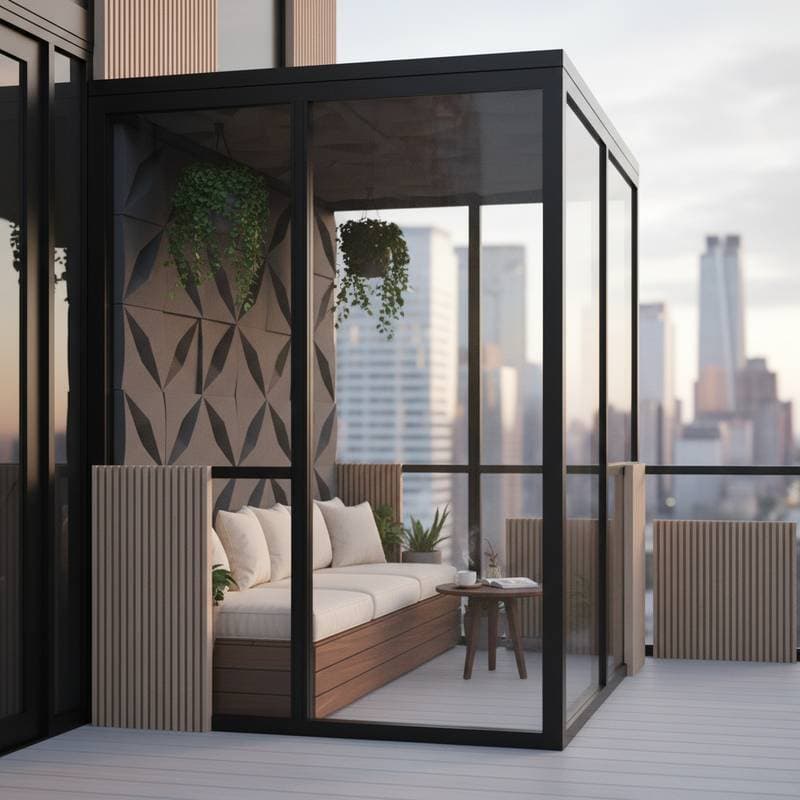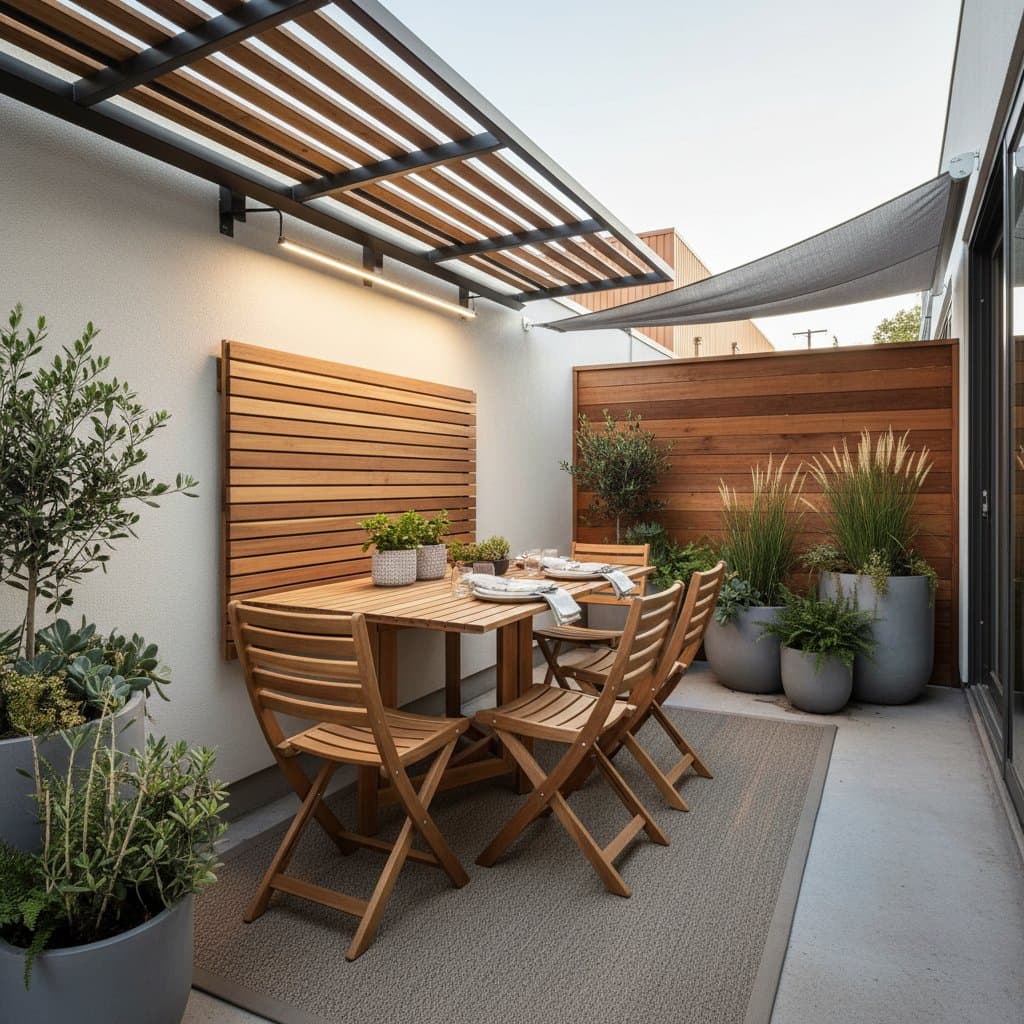Compact Pocket Fire Tables for Balconies Under 16 Inches
Small balconies often serve as overlooked spaces, especially when cooler weather arrives. They deserve better than becoming mere storage areas. Pocket fire tables address this by delivering targeted warmth, ambient light, and aesthetic appeal in a footprint that suits tight quarters.
These units combine portability with reliable performance, allowing quick deployment for evening gatherings or solitary relaxation. The following sections detail their features, safe operation, and long-term upkeep to maximize your balcony's potential.
Understanding Pocket Fire Tables
Pocket fire tables function as diminutive outdoor heaters fueled by gel, ethanol, or propane. Typical dimensions stay below 16 inches in width, with weights not exceeding 20 pounds, making them ideal for urban apartments or compact patios. Unlike larger fire pits, they require no fixed mounting and fit seamlessly into confined areas.
Designs often incorporate tempered glass enclosures to contain the flame and shield against drafts. Metal wind guards further enhance stability, ensuring a consistent burn suitable for one or two individuals positioned within a three-foot radius. This setup fosters intimacy without overwhelming the space.
Essential Preparation Items
Assemble the following before selecting or igniting a pocket fire table:
- A heat-resistant foundation, such as stone slabs, concrete pavers, or a dedicated metal stand
- Manufacturer-specified fuel, typically one or two gel cartridges or a compact propane canister
- An extended-reach lighter or matchstick for distant ignition
- A snuffer cap or extinguishing lid to safely douse the flame
- Heat-proof gloves to manage warm components
Position a fire extinguisher, water bucket, or flame-retardant blanket nearby for added precaution during outdoor use.
Operational Guidelines
Follow these steps to integrate a pocket fire table into your routine effectively.
- Select an appropriate location. Ensure a minimum 24-inch clearance on all sides. Steer clear of overhead foliage, textile coverings, or overhead barriers that could catch fire.
- Establish a secure foundation. Opt for a level, immovable surface like a reinforced balcony ledge or porcelain tile base to prevent tipping.
- Introduce fuel judiciously. Adhere strictly to guidelines; excess fuel risks uncontrolled ignition. A single gel can or 8 ounces of ethanol sustains a burn for 45 to 60 minutes.
- Initiate the flame securely. Apply the long lighter from a safe distance, averting direct exposure of face or limbs. Allow initial seconds for the flame to stabilize.
- Position for comfort. Maintain at least 18 inches of separation for seating. Direct flammable items, such as throws or pillows, away from the heat source.
- Terminate the burn thoroughly. Employ the snuffer or seal the fuel port. Permit full cooling before relocation or storage.
Key Safety Protocols
Restrict operation to well-ventilated outdoor settings; avoid indoor or semi-enclosed balcony configurations. Maintain a three-foot buffer zone for children and animals. Refrain from refueling on warm units to prevent spills or vapors from igniting.
Conduct pre-use inspections on glass elements for fractures, replacing any compromised sections promptly. Secure fuel storage in cool, shaded, moisture-free zones distant from sunlight exposure. Adhere to local fire codes, which may dictate usage restrictions in high-rise buildings.
Common Issues and Resolutions
A prematurely extinguishing flame often stems from gusts or depleted fuel levels; reposition for shelter or replenish as needed. Visible smoke signals incompatible fuel or obstructed guards—switch types or clear blockages immediately.
For diminished output, verify fuel reserves or cleanse air inlets with a damp cloth, allowing complete drying prior to reuse. Persistent irregularities warrant professional servicing to uphold safety standards.
Cost and Efficiency Overview
Expect to invest between 60 and 200 dollars for a quality pocket fire table, varying by dimensions and construction materials like stainless steel or ceramic composites. Gel fuel packs of three run approximately 10 dollars, with each providing about one hour of runtime.
Initial assembly requires under 10 minutes, while post-use tidying takes fewer than five. Owners report that this modest outlay extends usable balcony seasons, offsetting costs through prolonged enjoyment of fresh air and social moments.
Upkeep Routines
Clean the outer shell weekly using a solution of mild detergent and water, followed by thorough drying. Dispose of residual ash or debris after every third session to maintain efficiency.
Propane variants demand hose and regulator checks: apply a soapy solution to connections and observe for effervescence indicating leaks. Shelter the unit inside during off-periods to avert corrosion from elements or accumulation of particulates.
Efficient Storage Strategies
House fuel in a sealed, weather-resistant container adjacent to your entry for convenient access. Employ a slim metal bracket to store the table vertically, conserving floor space. Affix clear labels to storage areas, alerting household members to the presence of combustibles.
Enhancing Your Balcony Experience
Select a model aligned with your balcony's dimensions and preferred fuel for optimal results. Begin with a basic configuration to gauge performance, then incorporate complementary elements like stackable seating and a serving platter for beverages. This approach elevates simple spaces into cherished extensions of your home.






